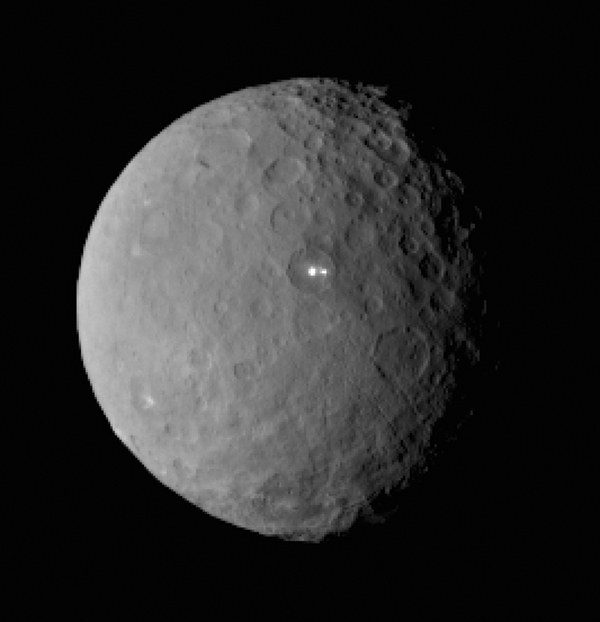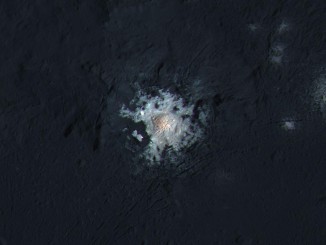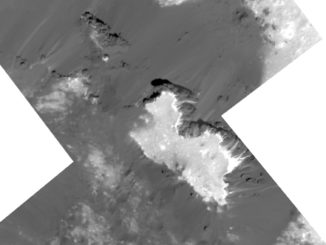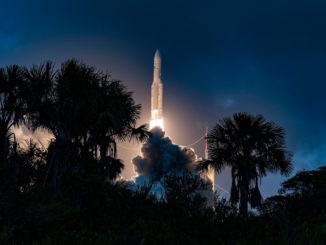
The discovery of puzzling bright spots on Ceres, the Texas-sized world now being studied by NASA’s Dawn spacecraft, has scientists wondering whether the features could be plumes from volcanoes launching material into space.
Scientists have detected evidence of ice volcanoes on Ceres with telescopes before, but Dawn’s approach to the dwarf planet will yield the first up-close imagery and data on the little world’s make-up and terrain.
“Ceres’ bright spot can now be seen to have a companion of lesser brightness, but apparently in the same basin,” said Chris Russell, Dawn’s principal investigator based at UCLA. “This may be pointing to a volcano-like origin of the spots, but we will have to wait for better resolution before we can make such geologic interpretations.”
Scientists believe Ceres could be covered in a crust of ice, perhaps encasing an underground ocean.
Dawn is set to be captured by the gravity of Ceres on March 6, then spiral into the first of a series of orbits in April. The space probe will continue its observations of Ceres until at least late 2016, coming as close as 232 miles from the dwarf planet, which is the largest object in the asteroid belt sandwiched between the orbits of Mars and Jupiter.
The robotic mission is the first spacecraft to visit Ceres.
The latest images released from Dawn’s framing camera are the best photos ever taken of Ceres. Dawn’s imagery has exceeded the sharpest pictures from the Hubble Space Telescope since late January, when the mysterious bright spots started appearing in the mission’s data catalog.
A photo taken Feb. 19 from a distance of 29,000 miles shows two of the bright spots in the same region on Ceres, prompting scientists to think they may be the signatures of volcanoes.
“The brightest spot continues to be too small to resolve with our camera, but despite its size it is brighter than anything else on Ceres. This is truly unexpected and still a mystery to us,” said Andreas Nathues, lead investigator for Dawn’s framing camera team at the Max Planck Institute for Solar System Research in Gottingen, Germany.
Follow Stephen Clark on Twitter: @StephenClark1.



